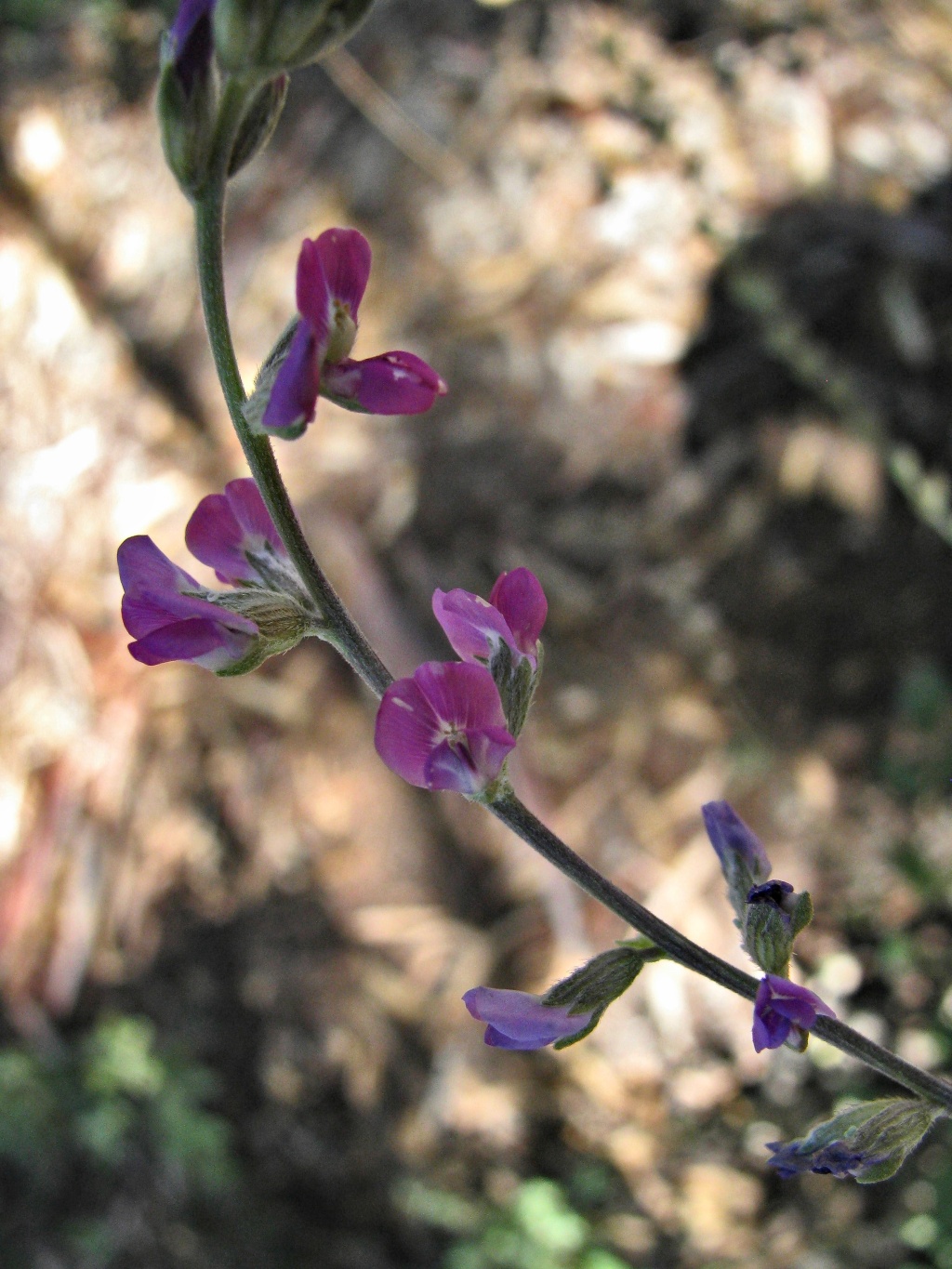Cullen australasicum
(Schltdl.) J.W.Grimes Native Scurf-peaErect or ascending much-branched shrub to 2.5 m tall; stems pubescent, glabrescent with age, striate, dotted with glands. Leaves pinnately tri-foliolate, to c. 12 cm long; leaflets ovate to lanceolate, 1–5 cm long, 10–30 mm wide, upper surface glabrous to sparsely hairy, lower surface pubescent, both surfaces dotted with glands, apices obtuse, mucronate, margins irregularly toothed; terminal petiolule 5–15 mm long; stipules triangular, acuminate, to c. 8 mm long. Inflorescence sometimes terminal, rachis 5–20 cm long; peduncles 3–20 cm long, longer than subtending leaves; flowers mostly in 3s along rachis; pedicels c. 1 mm long; bract ovate-acuminate, 2–3 mm long, hairy. Calyx obconical, 4–5 mm long, pubescent with black, brown, white or mixed hairs, teeth unequal, upper 4 longer or shorter than calyx tube, lower one larger and longer than others, longer than calyx tube; corolla 5–8 mm long, pink to violet-pink, persistent in fruit. Pod ovoid, 3–4.5 mm long, included in calyx, pubescent, black; seed 1, to c. 3 mm long, light brown. Flowers throughout year.
MuM, Wim, GleP, VVP, RobP. All mainland states. Endangered in Victoria where known with certainty from only 2 collections in the vicinity of Lakes Albacutya and Hindmarsh.
Cullen australasicum can generally be distinguished in the field by its upright branched habit and pinkish flowers. In herbarium material it can be extremely difficult to distinguish it from C. pallidum, C. patens and C. discolor.
An almost entirely glabrous plant collected near Mildura may be referable to this species.
Jeanes, J.A. (1996). Fabaceae. In: Walsh, N.G.; Entwisle, T.J., Flora of Victoria Vol. 3, Dicotyledons Winteraceae to Myrtaceae, pp. 663–829. Inkata Press, Melbourne.
 Spinning
Spinning


